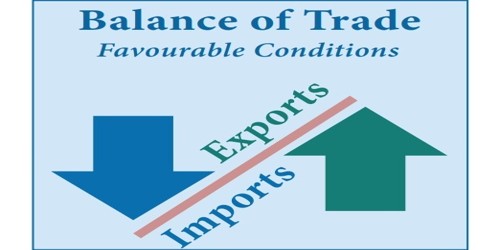
In the realm of investing, managing taxes is a crucial aspect that can significantly impact your overall returns. Tax-efficient investing strategies allow investors to minimize their tax liabilities, thereby maximizing their wealth over time.
Understanding Tax Efficiency in Investing
Tax efficiency in investing refers to the practice of structuring investments in a way that minimizes tax liabilities, maximizing net returns. This involves choosing investment vehicles, strategies, and holding periods that reduce the burden of taxes on investment gains. By being mindful of tax implications, investors can significantly enhance their overall investment performance.
The Importance of Tax Efficiency
Maximizing Returns: Taxes can dramatically erode your investment gains. By employing tax-efficient strategies, you can retain a greater portion of your returns.
Compound Growth: Keeping more of your money allows for greater compounding over time. The less you pay in taxes, the more capital you have to reinvest, leading to exponential growth.
Long-Term Financial Goals: Tax-efficient investing helps ensure that you meet your long-term financial goals by preserving your wealth from unnecessary tax burdens.
Key Tax Implications for Investors

Before delving into specific tax-efficient strategies, it is essential to understand the different tax implications associated with various investment types:
1. Capital Gains Tax
When you sell an investment for more than your purchasing price, you realize a capital gain. Capital gains are classified into two categories:
Short-Term Capital Gains: Gains on assets held for one year or less are taxed at ordinary income tax rates, which can be significantly higher.
Long-Term Capital Gains: Gains on assets held for more than one year are subject to lower capital gains tax rates, which can range from 0% to 20%, depending on your taxable income.
2. Dividend Taxation
Dividends received from investments also have tax implications. They can be classified as:
Qualified Dividends: Typically taxed at the long-term capital gains tax rates.
Ordinary Dividends: Taxed at your regular income tax rate, which may be substantially higher.
3. Interest Income
Interest earned from savings accounts, bonds, and other fixed-income investments is generally taxed as ordinary income. This means it is subject to your highest marginal tax rate.
4. Tax-Advantaged Accounts
Certain investment accounts, such as Individual Retirement Accounts (IRAs) and 401(k) plans, allow you to defer or eliminate taxes on earnings until funds are withdrawn. Understanding the rules around these accounts is essential for effective tax planning.
Strategies for Tax Efficient Investing
Now that we have laid the groundwork with an understanding of tax implications, let’s explore specific strategies you can employ to enhance the tax efficiency of your investments.
1. Utilize Tax-Advantaged Accounts
Tax-advantaged accounts, such as IRAs, Roth IRAs, and 401(k) plans, provide opportunities to save on taxes. These accounts allow you to either defer taxes on your investment earnings or withdraw them tax-free under certain conditions. Here’s how you can maximize these accounts:
Traditional IRA/401(k): Contributions to these accounts are made with pre-tax dollars, which means you reduce your taxable income in the year of contribution. Taxes are paid when you withdraw funds in retirement.
Roth IRA/401(k): Contributions are made with after-tax dollars, allowing for tax-free growth and tax-free withdrawals in retirement. This is especially beneficial if you expect to be in a higher tax bracket in the future.
2. Implementing a Buy and Hold Strategy
Investing with a long-term perspective can lead to favorable tax treatment. By holding investments for more than one year, you can benefit from lower long-term capital gains tax rates. Here’s how to apply this strategy:
Focus on Quality Investments: Select stocks and other assets you believe will appreciate in value over time, minimizing the need for frequent trading.
Avoid Churning Your Portfolio: Frequent buying and selling can lead to higher short-term capital gains and increased transaction costs. A buy-and-hold approach reduces taxable events.
3. Harvesting Tax Losses
Tax-loss harvesting is a strategy in which you sell losing investments to offset gains realized from winning investments. This can be a powerful technique to reduce your tax liability:
Offset Gains: By selling assets at a loss, you can use those losses to offset taxable capital gains, lowering your overall tax burden.
Carry Forward Losses: If your losses exceed your gains, you can use the remaining losses to offset ordinary income up to a certain limit, with any excess carried into future years.
4. Invest in Tax-Efficient Funds
When choosing mutual funds or exchange-traded funds (ETFs), consider their tax efficiency. Some funds are designed to minimize tax liabilities:
Index Funds: These tend to have lower turnover rates compared to actively managed funds. Lower turnover results in fewer capital gains distributions.
Tax-Managed Funds: Some funds are specifically constructed to minimize tax liabilities through strategies such as tax-loss harvesting and optimizing distributions.
5. Consider Asset Location
The location of your assets matters. Placing investments with different tax implications in the right accounts can enhance tax efficiency:
Taxable Accounts: Ideal for investments that produce qualified dividends or long-term capital gains. Assets with high ordinary income, such as bonds, may be less suitable here due to higher tax rates.
Tax-Deferred Accounts: Best for income-generating investments such as bonds or real estate investment trusts (REITs) that would be taxed at ordinary income rates if held in taxable accounts.
Tax-Free Accounts: Hold high-growth assets, such as stocks, in Roth IRAs to benefit from tax-free growth and withdrawals.
6. Focus on Tax-Efficient Withdrawal Strategies
When it’s time to withdraw funds from your investment accounts, having a strategy can optimize your tax position:
Order of Withdrawals: Withdraw from taxable accounts first to allow your tax-advantaged accounts to continue growing. This can help manage tax brackets in retirement.
Manage Tax Brackets: Strategic withdrawals that keep you within a lower tax bracket can minimize the tax impact of your distributions, particularly regarding capital gains and withdrawals from tax-deferred accounts.
7. Stay Informed about Tax Legislation
Tax laws can change frequently. Staying informed about the latest tax legislation, deductions, and credits is essential to ensure your investment strategy remains tax-efficient. Consult with a tax professional or financial advisor to understand how changes may impact your investments.
8. Invest in Municipal Bonds
Municipal bonds, issued by state and local governments, can offer tax advantages. The interest earned on these bonds is typically exempt from federal income tax, and in some cases, state and local taxes as well. This makes them an attractive option for investors seeking tax-free income.
9. Utilize Donor-Advised Funds
For investors looking to give back, donor-advised funds (DAFs) allow you to make contributions and receive an immediate tax deduction while retaining the ability to recommend grants over time. This can offer tax efficiency for charitable giving while allowing you to manage your philanthropic efforts.
10. Regularly Review and Adjust Your Portfolio
An effective tax-efficient investing strategy requires regular review and adjustment. Monitoring your investments and their tax implications can help you stay on track to achieve your financial goals:
Performance and Tax Efficiency: Regularly assess the performance of your investments in terms of both returns and tax implications. This can inform your future investment decisions.
Rebalance Wisely: When rebalancing your portfolio, consider the tax consequences of selling certain assets. Aim to minimize taxable events whenever possible.
Common Mistakes to Avoid in Tax Efficient Investing

While implementing tax-efficient strategies, it's essential to be aware of common pitfalls that can negate your efforts. Here are some mistakes to avoid:
1. Focusing Solely on Returns
While maximizing returns is essential, overlooking tax implications can lead to undesirable outcomes. Always consider the after-tax returns of your investments.
2. Neglecting to Track Cost Basis
Understanding the cost basis of your investments is crucial for accurate tax reporting. Maintain thorough records of your purchases, sales, and any adjustments to your cost basis.
3. Ignoring the Impact of Your Tax Bracket
Taxes are progressive, meaning that your tax rate increases with your income. Ignoring your current tax bracket can lead to suboptimal investment decisions.
4. Failing to Consult Professionals
Tax laws are complex and constantly changing. Failing to seek advice from tax professionals or financial advisors can result in missed opportunities for tax savings.
5. Not Planning for Retirement Withdrawals
Many investors do not have a withdrawal strategy for their retirement accounts, leading to inefficient tax burdens when they begin taking distributions.
Conclusion
In the pursuit of financial independence and wealth accumulation, tax-efficient investing plays a vital role in ensuring that you keep more of your money. By understanding tax implications, utilizing tax-advantaged accounts, implementing effective strategies, and avoiding common pitfalls, you can maximize your after-tax returns.
Tax-efficient investing is not a one-size-fits-all approach; it requires careful planning and ongoing management. As you navigate your investment journey, consider working with a qualified financial advisor or tax professional to design a strategy tailored to your individual circumstances. By prioritizing tax efficiency, you can put yourself in a stronger position to achieve your long-term financial objectives and enhance your wealth over time.








